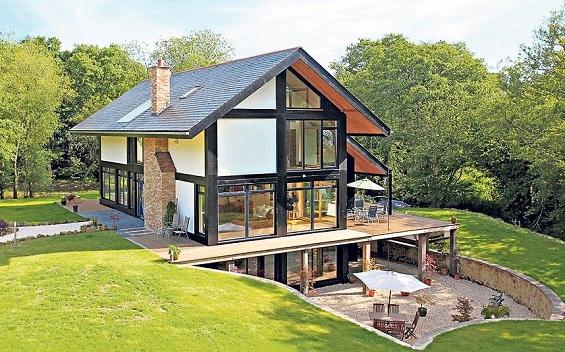As the world grapples with the challenges of climate change and environmental degradation, the importance of sustainable living has become increasingly evident. One significant aspect of sustainable living is finding an eco-friendly house that minimizes its environmental impact. If you’re in the market for a new home and want to prioritize sustainability, here are some valuable tips to help you find an eco-friendly house.

Tips on How to Find an Eco-Friendly House
Look for Energy-Efficient Features
An essential aspect of an eco-friendly house is energy efficiency. Look for homes equipped with energy-efficient features such as LED lighting, ENERGY STAR-rated appliances, double or triple-glazed windows, and proper insulation. These features help reduce energy consumption, lower utility bills, and decrease greenhouse gas emissions.
You may also like this : 12 Tips for Decorating Small Spaces: Maximizing Style and Functionality
Consider Renewable Energy Systems
Homes that incorporate renewable energy systems are highly desirable from an eco-friendly perspective. Solar panels, wind turbines, or geothermal heating and cooling systems can significantly reduce reliance on fossil fuels. These systems not only generate clean energy but can also save you money in the long run by decreasing or even eliminating your energy bills.
Assess the Building Materials
The construction materials used in a house can have a substantial impact on its overall environmental footprint. Look for homes built with sustainable materials such as bamboo, reclaimed wood, or recycled materials. These options are renewable and require fewer resources to produce, reducing the carbon footprint associated with the construction process.
Check for Water Efficiency
Water is a precious resource, and an eco-friendly house should prioritize water efficiency. Look for homes with low-flow fixtures, such as toilets, faucets, and showerheads. Additionally, a rainwater harvesting system or a greywater recycling system can help reduce water wastage and support sustainable water management.
Evaluate the Landscaping
The surrounding landscape is an essential element of an eco-friendly house. Look for properties with native plants and drought-tolerant landscaping that requires less water. Incorporating rain gardens or permeable surfaces can help manage stormwater runoff, reduce soil erosion, and prevent pollution of nearby water bodies.
Research Green Building Certifications
Green building certifications provide valuable indicators of a home’s sustainability. Certifications like LEED (Leadership in Energy and Environmental Design) or ENERGY STAR ensure that a house meets specific environmental standards. These certifications consider factors such as energy efficiency, indoor air quality, and sustainable building practices. Paying attention to these certifications can simplify your search for an eco-friendly home.
Consider the Location
An eco-friendly house extends beyond its physical structure and includes its location. Look for homes in proximity to amenities such as public transportation, schools, and stores. A well-connected location reduces the need for long commutes, promoting sustainable transportation options like walking, cycling, or using public transit.
Finding an eco-friendly house is a significant step towards a sustainable lifestyle. By prioritizing energy efficiency, renewable energy systems, sustainable materials, water efficiency, and thoughtful landscaping, you can contribute to a healthier planet while enjoying the benefits of reduced utility bills and a healthier living environment. Remember to research green building certifications and consider the location’s sustainability factors to ensure your new home aligns with your eco-friendly goals. With these tips in mind, you can make an informed decision and find a house that supports both your lifestyle and the well-being of the planet.





